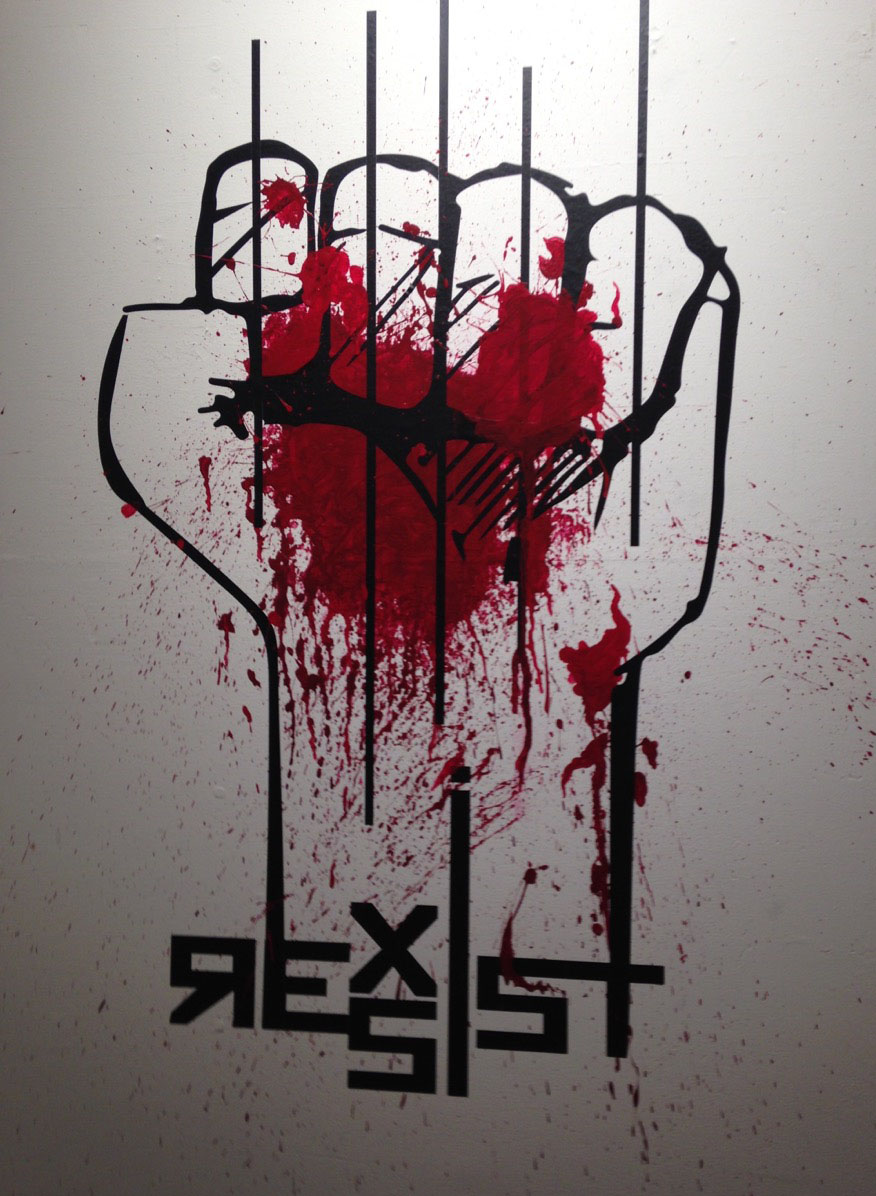

“Existe y resiste.” That’s the title of the newly-opened exhibit in the Mission Cultural Center for the Latino Arts in San Francisco. It means “exist and resist” in Spanish, and opened on Inauguration Day as an artistic response to the 2016 election. The objective of the exhibit, according to the gallery website, is to allow “artists from diverse communities [to] raise a voice validating our right to exercise the First Amendment.”
For many artists, the gallery is a safe space, as San Francisco is a liberal city and the Mission is a diverse community. Susana Aragon, one of the artists featured in the exhibit, believes that art is a powerful tool that can give a voice to people who otherwise feel voiceless. “Artists are the spirit of our community,” she says. “We are the receptors of all the feeling and emotions and try to express that in a creative way.”
Though there was a focus on the election, artists cover other political subjects as well. A series of paintings titled “Adapt” uses mixed media — wood, paint and ink — to bring attention to a variety of issues, including over-priced housing, a growing issue for many living in San Francisco, police brutality and global warming.
Each “Adapt” painting has a colorful, graffiti background and a person in black and white in the middle. One yells into a megaphone, the other has her fists in the air, another holds up a sign — all representing ways to exercise freedom of speech.
Many works are anti-Trump; artist Adrian Delgado painted a portrait of Donald Trump with people climbing up his hair, the American flag on one side and the Mexican flag on the other, presumably representing immigrants who feel stuck in the middle.
An entire wall is covered in 81 portraits as a tribute to those killed by police brutality, printed in blue, yellow and red, each one printed with a victim’s name: “Justice for Mike Brown,” “Justice for Tamir Rice” and so on.
In addition to paintings, decals, poems and posters, the exhibit also contains many interactive pieces. Susana Aragon created an interactive video installation. She put out a bowl of water in a dark room, and invited people to put on headphones, which played nature sounds, and place their hand over the bowl.
Videos play on the palm of the person’s hand — flowers blossoming, shapes shifting and glowing, changing colors.
Aragon believes that in times of fear or uncertainty, art is crucial. Says Aragon, “In times when it’s dark, and it’s hard, and everything seems difficult, art can help bring us together and bring our own light.”
Her installment is meant to be introspective. Aragon thinks that the election has caused us to focus too much on what has been happening around us, on the outside. “That’s what I tried to explore in this installation,” she says. “The video helps [us] to see inside. Inside of yourself.”
Aragon’s piece is not the only interactive art. There is a large metal cage-like sculpture hanging from the ceiling, and a basket full of gold-painted feathers. Attendees are invited to write their feelings or opinions on the feathers and hang it on the sculpture.
Not only is this exhibit interactive, but also empowering. It provides a voice to a diverse community that often feels overlooked. There is no question that the message is political: it’s a way for artists to express any frustrations or issues they see in their community and world. Through paintings, video, prints and posters, these pieces make a statement about reproductive rights, the rights of minorities, LGBTQ rights and immigrant’s rights — and the right to exist and resist.



